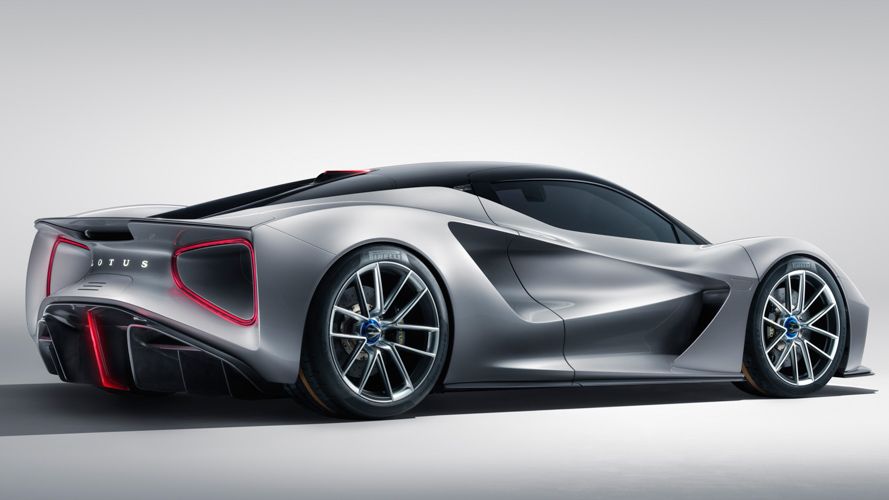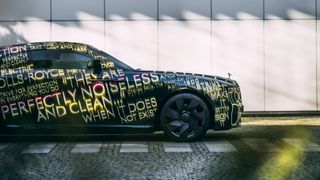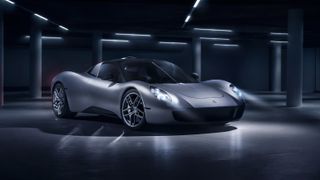AutoEV tech will usher in a new dawn for Rolls-Royce and Bentley, but for sports cars it’s a different storyGiving electric sports cars a unique character is one of the trickiest challenges EV manufacturers faceWhen you purchase through links on our site, we may earn an affiliate commission.Here’s how it works.
AutoEV tech will usher in a new dawn for Rolls-Royce and Bentley, but for sports cars it’s a different storyGiving electric sports cars a unique character is one of the trickiest challenges EV manufacturers faceWhen you purchase through links on our site, we may earn an affiliate commission.Here’s how it works.
Giving electric sports cars a unique character is one of the trickiest challenges EV manufacturers face
When you purchase through links on our site, we may earn an affiliate commission.Here’s how it works.
(Image credit: Lotus)

(Image credit: Lotus)
The transition from internal combustion to electric propulsion will benefit the vast majority of cars, from city-dwelling superminis to continent-crossing luxury limos. All will swap noisy engines for near-silent motors that run smoothly and, of course, emit no local emissions.
Manufacturers like Bentley andRolls-Roycehold massive engines close to their hearts, and will bid them an emotional farewell when the time finally comes. But both also see the potential for drive train technology that will undoubtedly make their vehicles even more luxurious than they are today.
Fast-forward to 2022 and Rolls-Royce chief executive Torsten Müller-Ötvös told me: “We experimented with an electric Phantom 10 years ago…Clients enjoyed driving it and they said it’s perfect, it’s Rolls-Royce in its purest form. Even more silent than a 12-cylinder.”
Today, Rolls-Royce has clients who simply won’t buy a car unless it is electric. “That’s a basic principle of theirs…[for them] the combustion engine is over,” Müller-Ötvös said.
(Image credit: Rolls-Royce Motor Cars)

(Image credit: Rolls-Royce Motor Cars)
Delving quickly into an even smaller motoring niche are companiesturning classic cars electric.Lunaz, for example, is seeing huge success in swapping the engines of classic Bentleys and Rolls-Royces for electric motors. But, for now, at least, electrifying classic Ferraris and Lamborghinis aren’t quite so popular.
Sign up to the T3 newsletter for smarter living straight to your inbox
Get all the latest news, reviews, deals and buying guides on gorgeous tech, home and active products from the T3 experts
Range anxiety is quickly becoming a thing of the past, thanks to larger electric cars achieving 200 or even 300 miles of range. Charger anxiety remains, as the public charging networks struggle to keep up with consumer demand for electric vehicles (EVs), but I have no doubt the situation will eventually improve. Especially at the luxury end of the market, where private garages and off-street parking suitable for charger installation are more readily available.
At the opposite end of the market, electric city cars like the Honda E and Renault Zoe are popular, with the latter offering over 200 miles of range.
But somewhere in-between, in the realm of sports and supercars, the future is going to be more difficult.
The crux of the issue is, if all EVs use broadly the same electric motor and battery technology, with the latter making them heavier than ever, how do brands that pride themselves on handling dynamics and driver engagement differentiate themselves? How does one brand win a buyer over another, when their drivetrains are broadly the same?
Mate Rimac, founder of Rimac and chief executive of the newly formed Bugatti Rimac, told me: “That’s the billion-dollar question all the car companies are asking themselves. We have these discussions all the time…The high-performance companies, like BMW M, Audi Sport or Mercedes AMG, or Ferrari, Lamborghini, Porsche and so on, have a much bigger challenge.”
(Image credit: Bugatti Rimac)

(Image credit: Bugatti Rimac)
A key concern among sports car companies and their customers is the weight of batteries. In some cases, these enormous packs can weigh 500 kg, but their location on the floor of a car can at least be used to lower the centre of gravity and minimise roll through corners.
(Image credit: Gordan Murray Automotive)

(Image credit: Gordan Murray Automotive)
It will be a little while yet before any of this can be proven. But for now, it’s far easier to imagine the delights of an electric Rolls-Royce than it is the handling characteristics of a battery-powered successor to the Lotus Elise or McLaren F1. I, and a great many other petrolheads, will be eager to find out if manufacturers really can deliver on their EV sports car claims.

Vollebak pushes the limits of outerwear with Double Graphene Puffer and Shielding SuitThe company continues to weave innovation into every thread
The company continues to weave innovation into every thread

Bowers & Wilkins Pi6 review: sensational sound, ordinary ANCBowers & Wilkins' step-down true wireless earbuds sound amazing and are well-priced – so what’s the catch, if anything?
Bowers & Wilkins' step-down true wireless earbuds sound amazing and are well-priced – so what’s the catch, if anything?